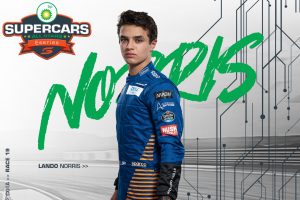Up Next

As The Race reaches the end of its first ever season, we’re celebrating by picking some of our favourite pieces of our 2020 output.
American Editor Jack Benyon insists it was hard and also out of character to choose one of his own pieces, but the subject matter was just too good to miss.
“Lando Norris’s arrival in IndyCar during its esports lockdown was a big story,” says Benyon. “Through his Twitch stream we got to see a unique insight into how a Formula 1 driver and engineer work and why they have reached the pinnacle of their chosen profession.
“With fixed set-ups, it was baffling to see how much detail Norris and Andrew Jarvis went into and how seriously they took the esports racing. No surprise they went on to win then!
“If you can look past what appears to be horrendous self-advertisement, I feel the insight via Norris’s Twitch stream is just too big an opportunity to miss regardless of who wrote it.”
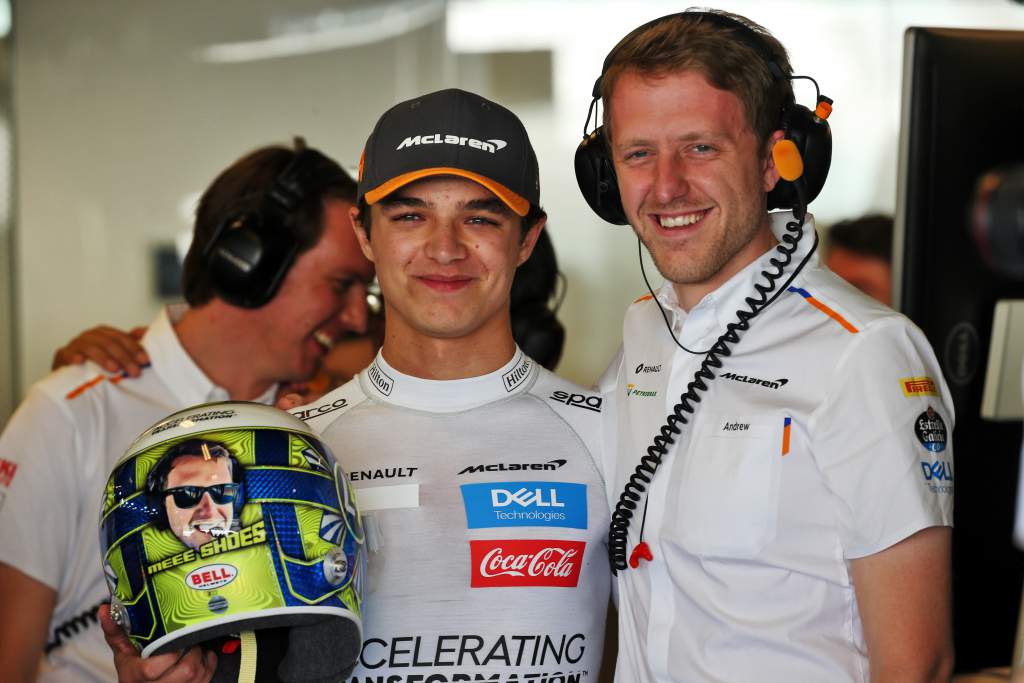
You might remember this Formula 1 duo from radio messages such as “Are you crying? Jarv frickin’ crying!”, but the relationship between Lando Norris and his McLaren Formula 1 engineer Andrew Jarvis was a big part of helping Noris establish himself in the championship during his rookie year.
In fact, one of the things that has always impressed McLaren about Norris is the 19-year-old’s feedback clarity and accuracy. When Norris was desperately trying to use the two FP1s he was given by the team in 2018 to persuade them to give him a seat, a wet session at Monza was the second of the two.
In modern F1 teams limit wet running and that was exactly what Norris didn’t need – less track time for persuasion. But the clarity of feedback from the few laps from that session went someway to showing how quickly he would get up to speed given the F1 chance. Feedback was not something he would need to learn and it was clear it was a skill he’d mastered.
Come the end of 2019 and Jarvis left Norris to take up a role in McLaren’s IndyCar programme. Although he was tempted back for what should have been the first few rounds of the season due to the coronavirus outbreak, the engineer is still set to focus stateside in the future and that partnership – now infamous for that crying radio message and the helmet Norris gave to Jarvis with his own face on – is set to end.
MEEE SHOES! It’s Jarv’s last race this weekend, so I did what every other driver would do. Got his face painted on my lid 🎨 #AbuDhabiGP pic.twitter.com/peOIFl0ZO6
— Lando Norris (@LandoNorris) November 29, 2019
But this lockdown has brought the pairing full circle. Norris – an iRacing regular – has been persuaded to drive for McLaren in the IndyCar Challenge, and as he undertook his first practice session at the track where the series will race this weekend at the Circuit of the Americas, Jarvis’ dulcet tones were present to guide Norris through the session. Jarvis has been helping Craig Hampson – McLaren’s race and research and development engineer – on Robert Wickens’ car over the past few weeks, and is “well-prepared” to support Norris for the duration of the weekend.
What followed was mesmerising. While watching Norris pound around for two hours on his Twitch feed won’t be everyone’s cup of tea, the post-stint debriefs in the pits gave a unique insight into how a driver processes, absorbs and feeds back data, and how seriously Norris takes his iRacing.
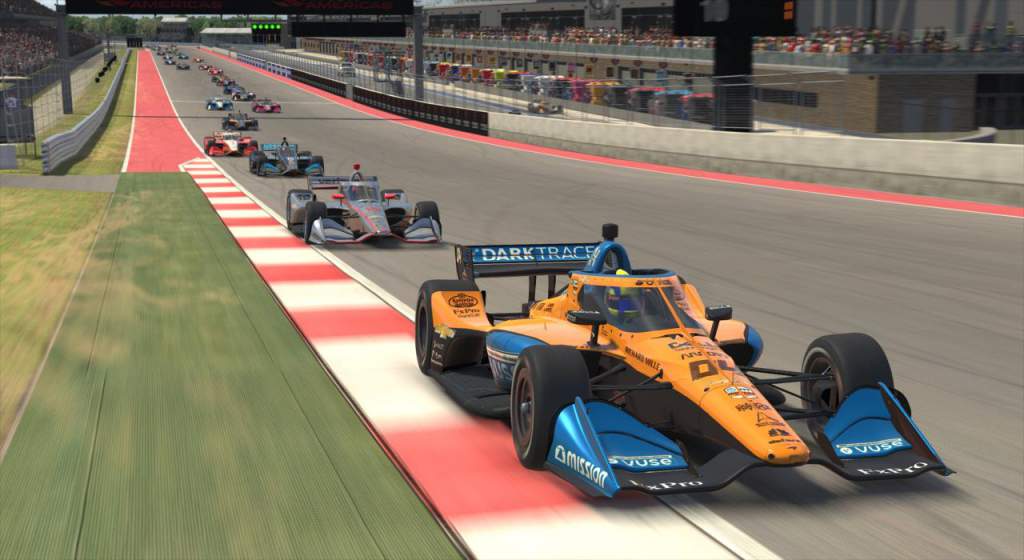
In the modern world of cloak and dagger Formula 1, very few people in the world will be privy to an engineering debrief – 10 seconds recorded for Netflix’s Drive to Survive documentary one year previous is as close as 99.9% of us will get. That makes hearing Norris and Jarvis communicate even more valuable.
The Race followed Norris’s two-hour Twitch stream of his first practice session to bring you the engineering debriefs.
Swapped the F1 car for something a little different. I’ll be racing this beast with @ArrowMcLarenSP in Saturday’s #INDYCARChallenge 🇺🇸 #iRaceforAMSP pic.twitter.com/q4qMqaYO6Q
— Lando Norris (@LandoNorris) April 23, 2020
First debrief, after a few push laps for reconnaissance
Lando Norris: “High speed is – I don’t even know the corner numbers, let me get a track map up! Turns 16, 17 and 18 pretty oversteer-y. Limited by rear. Same as Turns 3, 4 and 5 and so on. Pretty neutral and always have to have a pretty smooth input on turn-in. I have to be very gradual and not combine too much brake and steer at the same time.
“Once you kind of get through the entry phase of these corners, then the mid-corner is not too bad. It feels very soft compared to previous set-ups I’ve driven, so when I hit an apex kerb the whole car bounces a lot. So also then it feels quite lazy even though it’s neutral on entries to higher or medium speeds, it also feels quite lazy in change of direction on [Turns] 3 to 4, 4 to 5 and so on.
“Slow speed, a lot of front locking. It feels like the front wheel is possibly in the air because it’s quite soft. A lot of front-end rotation, and as soon as you have one front-end rotation the whole car starts sliding and you’re screwed basically. I’ve gone quite rear on brake balance – 56.2 – I already tried a bit further but even now on 56.2 I had quite a big rear-lock-up into Turn 1, on lap one in Turn 12, that’s where I spun. That’s the most important thing, to avoid the lock-ups into the slow speed, and instantly gain one, one and a half tenths by not under rotating or sliding the car. Traction I’d say I struggle quite a bit, very snappy, quite unpredictable out of [Turn] 1, 9, 12, and Turn 20.”
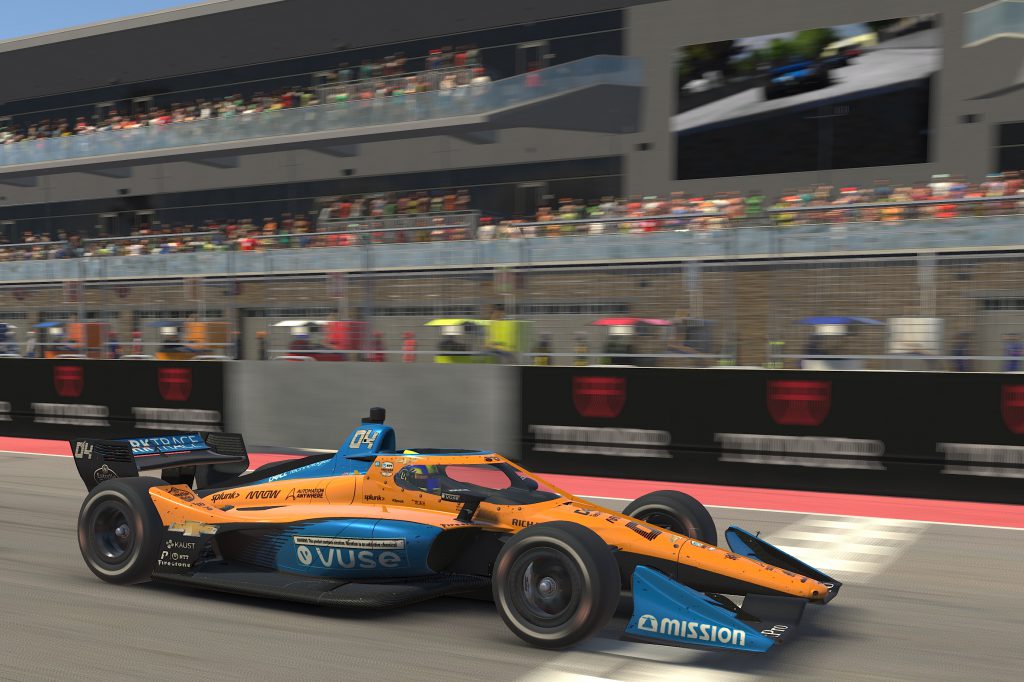
That’s just a few laps of track action from Norris. He’s monitoring his own times and everybody else’s, constantly processing what the car is doing while also finding time to mention people giving shout-outs to his fans and people donating to him on Twitch!
But while there are a few mutterings of soundbites from Netflix’s recent hit Tiger King – “Carole Baskin killed her husband,” he quotes – the approach to what the car is doing and how it’s reacting is deadly serious. There’s no doubt – even if there are a few distractions – that this is being approached systematically. Much like his F1 approach actually. Fun but fast.
Post qualifying run debrief
LN: “It was an awful lap mate!”
Andrew Jarvis: “Well, I didn’t want to say…Still in the threes [1m43s] though.”
LN: “Yeah but my optimal is 1m43.5s. On Turn 1 I was five tenths up on my first lap. The tyres take a little bit longer to come in for the high speed corners. I improve in the high speed on my second push, like Turn 4, 5, 6, 7, 8. But slow speed is batter on lap one.”
AJ: “What’s the limitation on the second lap, is it the rear in low-speed [corners]?”
LN: “It’s just very snappy, hence the spins basically. It’s very peaky grip. It’s really good but if you go a bit over you just spin. And it’s super-easy to lock-up too.”
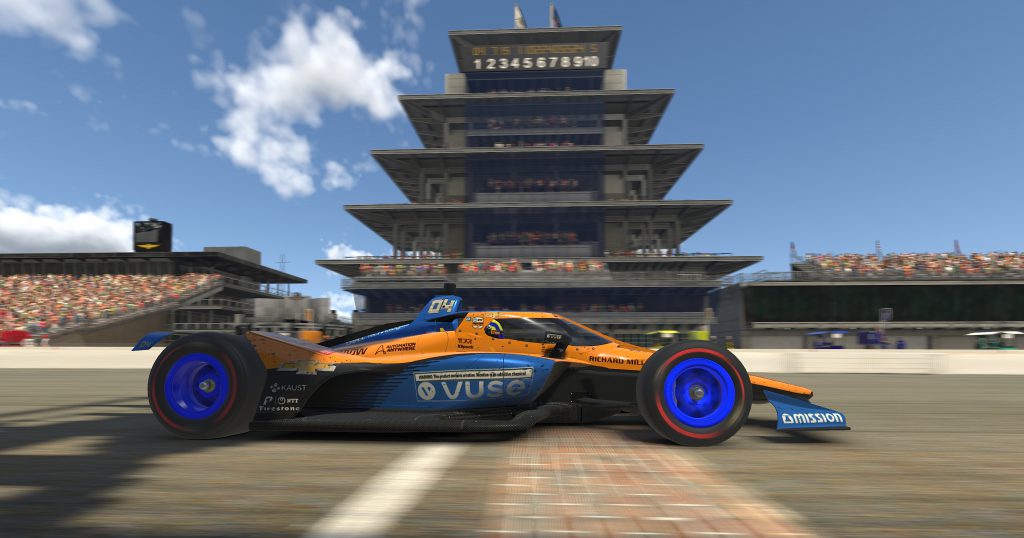
The low-fuel runs were a success as Norris moved even further clear at the top of the leaderboard, albeit at this point the expected frontrunners on Saturday – Sage Karam and Felix Rosenqvist for example – hadn’t set flying laps.
After 40 minutes or so of streaming, Jarvis and Norris pumped in the fuel and went for some longer runs. IndyCar uses Firestone tyres, so there was plenty to learn for Norris – who hasn’t used anything other than Pirellis since his European Formula 3 title-winning season in 2017.
The fuel is also a key element in terms of learning how to save it when needed, as that will play a big part in the strategy of the race on Saturday – something else Norris doesn’t have experience of in an IndyCar setting.
First debrief following longer-run
LN: “Car was more stable, I guess because of more weight out of the corners. Acceleration felt worse. A little bit more control out of the slow-speed [corners]. I felt like I had to drive the car a lot slower in general, it felt even more lazy, even more prone to front locking.
“Inputs I made had to be very delayed and much slower than I wanted to.
“Apart from that the general balance didn’t feel too bad, it felt reasonably good. High-speed [corners] it wasn’t as unstable as quali set-up. I think that’s because I’m approaching Turns 16, 17, 18 slower so the rear isn’t as much on the limit throughout this phase.
“Slow-speed [corners] was generally similar to q [qualifying] runs. I didn’t really feel any [tyre] deg to be honest. I think it did take me a few laps to get used to the high fuel anyway. Nothing felt particularly bad.
“The thing I’m going to have to be careful of in the race is the slow speed exits, like out of Turn 9 especially, super-easy to lose the rear. Out of Turn 1 as you go down the hill or as you go uphill out of Turn 9. And Turn 20 as well. Any time there’s an incline or a decline on the exit and under traction, the rear becomes very unstable. Traction is pretty poor.”
The fact of the matter is, the current IndyCar has far less downforce than Norris’s F1 machine. So while Norris has done an F1 race and FP1 at the circuit, learning how the squirmy IndyCar handles around the track is going to be a learning curve, even if Norris has admitted to doing a bit of IndyCar driving on iRacing prior to this weekend.
The track is all about compromise. Turns 2-7 are all high-speed kinks, but prioritising them will hurt your car in the slower Turns 11-16. Knowing how much to compromise each one and how that’s affected by fuel load and tyre wear is a key aspect of staying upfront in an IndyCar race.
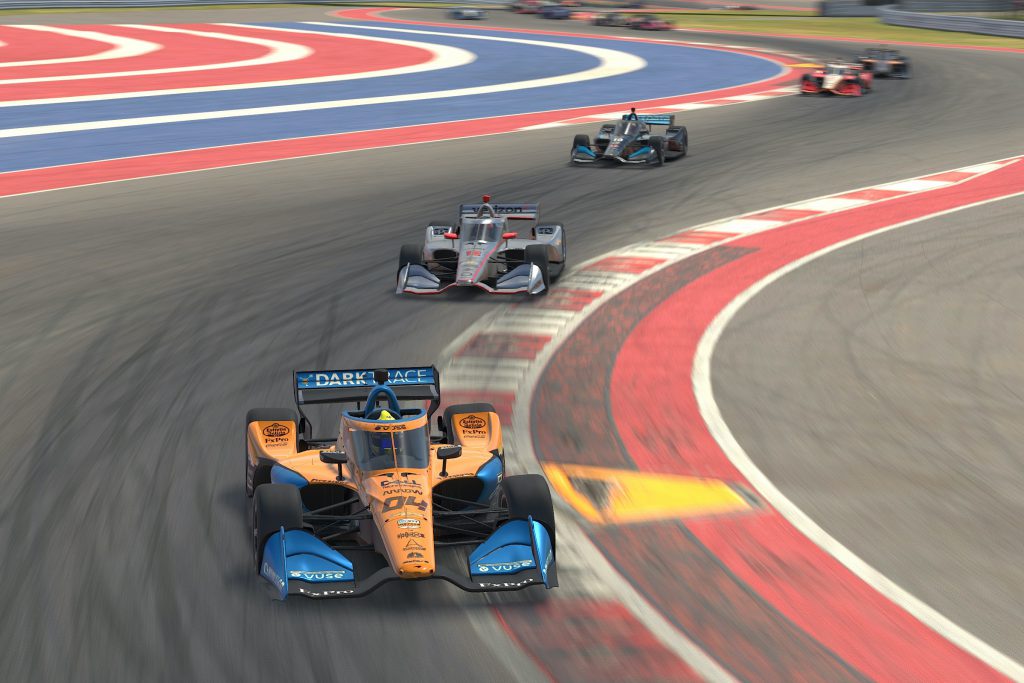
Final debrief at the end of the session after a longer, long-run
LN: “There’s very little deg. You gain a lot just in like the slow speed really when I put these new tyres on. Bit less lockups in Turn 1, 11, 12. Big difference in Turn 13 for some reason. The deg was awful in this corner, you’re really prone to front locking because you’re braking and turning a lot. And then you get a lot of understeer mid-corner. So as soon as the fronts go away [lose grip] a bit you lose a lot of time. Traction is tricky out of it through Turn 14 with the combined traction. I lose a lot of speed on the straights with the high fuel. Maybe tyres, it could be tyre temps.”
AJ: “Sorry, you lose time on the straights with tyre temp?”
LN: “It could just be the fuel, I don’t know, iRacing is weird. It could be that I have a lower ride height on colder tyres so it bottoms out more on the straights or something, but I don’t think it’s that. The fuel burning away and picking up straight-line speed quite a bit towards the end of the run. It’s quite a bit quicker, maybe like a tenth all the way down the straight from lap one to the last lap, final lap of the stint.”
AJ: “Just on that straight?”
LN: “Just down the back straight I’d say. Maybe two tenths altogether, one and half, two tenths all the way around the lap. Apart from that, not a lot to say. Tyre deg was minimal, just the front locking and slow speed traction which was worse towards the end of the run.
“High speed so Turns 3,4,5,6,7,8, I was improving quite a bit, like two and a half tenths almost in the last few laps at the end of the stint compared to my first few laps and I didn’t improve any of that on my lap 1 there. I only went quicker really in the final sector, is where I found all of my time on the tyres I just used.”
AJ: “That’s a bit weird.”
LN: “Yeah some tracks there’s frickin’ loads of deg. This track there’s just none.”
AJ: “High speed gets better, slow speed there’s more locking, better end of straight speed. I think we’re going to have to put that down to the game because that doesn’t sound physical to me! The fact that the high speed gets better in that sense. Could be the ride-heights maybe.”
LN: “No, it’s not the ride-heights. There’s just no deg! The car becomes a bit more nimble, and change of direction and everything is quicker. And in the long corners, the weight difference makes a big difference. From [Turn] 5, change of direction, all the way through [Turn] 6 was where I was gaining a lot of my time with my low-fuel.”
AJ: “Maybe the fuel burn or load is having a bigger effect.”
LN: “The tyre deg is just very equal basically. I went quick with the new tyres, ideally I think you should do a 44.8s, a really decent lap, but still end of the run I should still be able to do 45.0s if I nail the lap, it’s just very tricky because of the front-locking.
AJ: “So it’s like two-tenths of deg.
“That’s really useful thank you.”
Jarvis will now go away and crunch the data, and everybody else’s from that session, while Norris gets in some more practice before Saturday’s race.
What was a two hour stream of Norris pounding around COTA has given us our best insight into a driver-engineer F1 relationship in quite some time. If the preparation that the pair have gone through is anything to go by, they should be extremely quick on Saturday and the times suggest he will be an immediate frontrunner.
However, we’ve already seen in the four IndyCar iRacing Challenge races so far that the quickest driver rarely wins, and strategy is king. That’s where Norris and Jarvis’s adaptation skills are really going to come into play. And they have F1’s bragging rights squarely on their shoulders.


